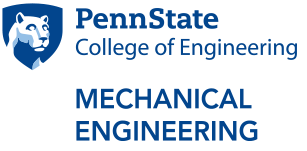Resilience of the Law of the Wall
ABSTRACT: There have been some heated debates over the validity of the law of the wall and its precise value of von Karman constants in recent years. The earliest experimental evidence of the law of the wall can be traced back to Nikuradse in his 1932 pipe-flow experiments. Although Theodore von Karman derived a mixing length model to “unsuccessfully” account for the core region of the channel flow, the derivation of the law of the wall in the textbooks seems to follow Prandtl’s mixing length hypothesis by assuming a constant total shear stress. This leads to a mixing length being nicely proportional to the wall distance, \ell = \kappa y. For a channel (or pipe) flow the total shear stress decreases linearly from the wall to the center of the channel (pipe). But the law of the wall seems to persevere in the channel (pipe) with only a small wake. Similarly, the constant total shear stress assumption can only be approximated in a small portion of the boundary layer flow but the law of the wall seems to prevail longer than one expects. Even for flows with mild pressure gradients and/or flows with suction and blowing, there seems to have a log-layer region which fits the law of the wall quite nicely. In this talk, we shall observe the resilience of the law of the wall when subjected to variations in total shear stress. Finally, we shall investigate recent compressible DNS data under adiabatic and isothermal conditions. Our aim is to seek a universal transformation of the law of the wall for both velocity and temperature from incompressible to compressible regimes.
BIOGRAPHY: Dr. George Huang is a Professor of Wright State University. He did his PhD with Brian Launder and Michael Leschziner at University of Manchester and performed his post-doc study with Peter Bradshaw at Stanford University. After spending 7 years at NASA Ames working on turbulence modeling of compressible flows, he joined University of Kentucky as a faculty and then Wright State University as the chairperson of the Department for 10 years. Dr. Huang’s area of research includes turbulence/transition modeling, Micro Air Vehicles, modeling of plasma actuators, full human-blood circulation and thermal control and management. Dr. Huang is the co-winner of NASA software of the year honorable mention award, "Overset Tools for CFD Analysis", NASA, 1998; the co-winder of SC2000 Gordon Bell Prize, honorable mention, rice/performance category, “High-cost CFD on a low-cost cluster", 2000; the winner of Silver Award and Ackroyd Stuart prize, Royal Aeronautical Society, 2006; the winner of Outstanding Engineers & Scientists Award in the category of Education, Dayton’s Affiliate Societies Council, 2010 and the Lifetime Achievement award, ASME-Dayton Chapter, 2019.
Event Contact: Serena Sidwell


